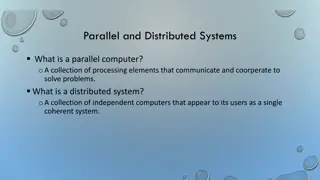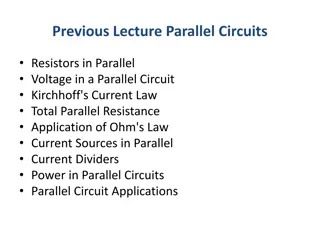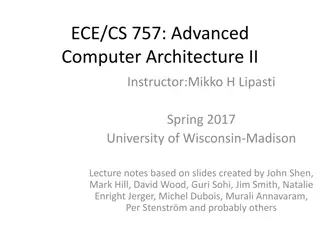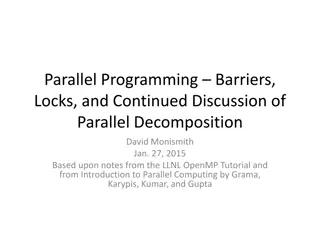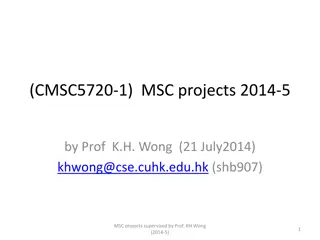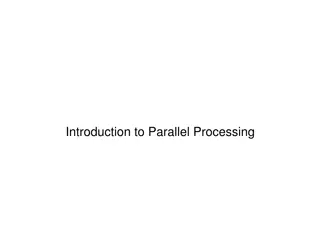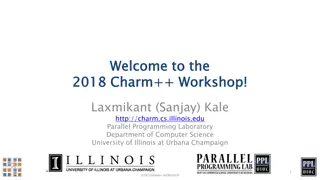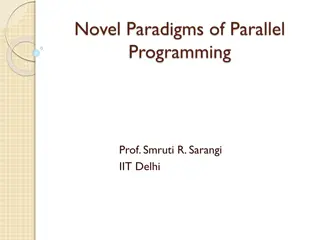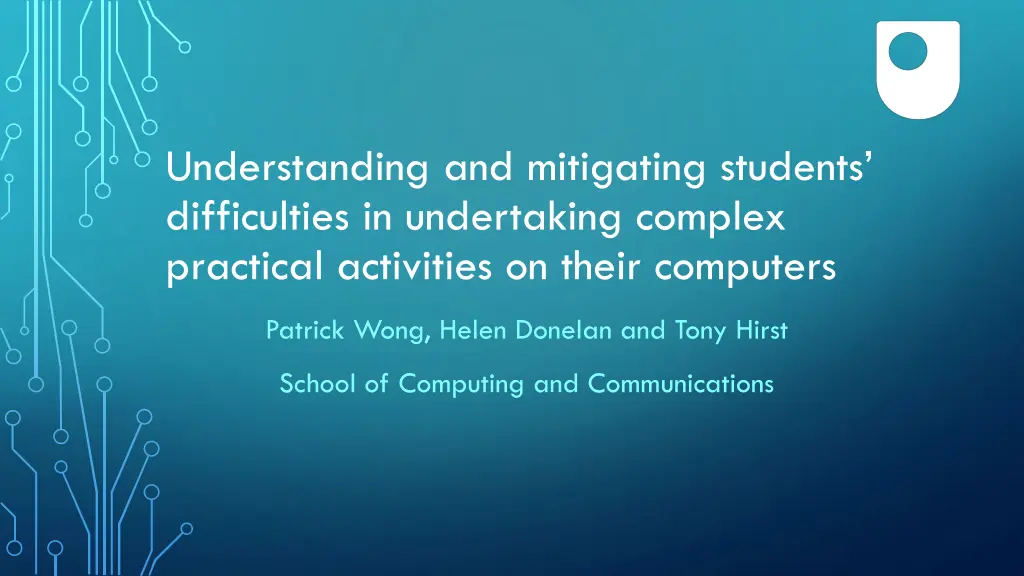
Understanding and Mitigating Students' Challenges in Computer-Based Practical Activities
Discover how virtualisation can help address students' difficulties in complex practical activities on their computers. This research explores students' experiences, common obstacles, and the support they require through surveys and interviews. Learn about the methodology and aims to understand and enhance students' learning outcomes.
Download Presentation

Please find below an Image/Link to download the presentation.
The content on the website is provided AS IS for your information and personal use only. It may not be sold, licensed, or shared on other websites without obtaining consent from the author. If you encounter any issues during the download, it is possible that the publisher has removed the file from their server.
You are allowed to download the files provided on this website for personal or commercial use, subject to the condition that they are used lawfully. All files are the property of their respective owners.
The content on the website is provided AS IS for your information and personal use only. It may not be sold, licensed, or shared on other websites without obtaining consent from the author.
E N D
Presentation Transcript
Understanding and mitigating students difficulties in undertaking complex practical activities on their computers Patrick Wong, Helen Donelan and Tony Hirst School of Computing and Communications
Background Hands-on practical activities can improve students understanding of technological concepts The activities provide an opportunity to develop technical skills Require students to download, install and configure specialised software at their own computers A daunting task for less technical students Getting immediate technical support is difficult as they are distance learners Is virtualisation a solution? Is cloud-based or local virtualisation more appropriate?
Aims and objectives Aim: To understand students experiences of using virtualisation for their computing practical activities and mitigate the common difficulties they experienced Objectives: To investigate students experiences of using virtualisation for their computing practical activities To identify the common difficulties they experienced To investigate what study support students need To gather students opinions on cloud-based virtual labs
Methodology Use the set of practical activities (in total 12 hours on networking and cybersecurity) in TM255: Communication and Information Technologies for this study Use two Real-Time Student Feedback (RTSF) surveys to gather students experience data Telephone interviews for more focussed discussions Quantitative analysis for the RTSF surveys Qualitative analysis for the telephone interviews
RTSF surveys First survey: Student experience on downloading, installing and using a specialist software Second survey: Student experience on using local based virtualisation on a set of more complex practical activities The participants were from the 18J cohort 512 registered at 25% point 83% male, 17% female 74% are between the age of 21 and 39
RTSF survey 1 133 students responded to the survey (26% response rate) 96% respondents could download and install the specialise software 5% respondents experienced a problem but managed to resolve it. 96% respondents could follow the instructions to complete the two practical activities 67% prefer to use Local version, while only 33% prefer a cloud-based virtual lab. Mac users expressed more interests in using a virtual lab as there was no Mac version of the software available.
RTSF survey 2 Survey took place at Week 24. 440 student remained registered 88 students responded (20% response rate) All 88 respondents could download, install the virtualisation software and imported the virtual appliances, but 10 respondents experienced a problem. All respondents could follow the instructions to complete the practical activities All respondents agreed virtualisation was an appropriate tool for these practical activities (cybersecurity) and the average score they gave to the activities is 8/10. 66% prefer to use Local version, while only 34% prefer a cloud-based virtual lab.
Telephone interviews Held after the presentation was finished (mainly in August) Length: about 30 minutes each 10 students agreed but 9 actually participated 2 female and 8 male (1 didn t participate) 2 registered disabled, 1 non-UK, most participants achieved Pass 2 or 3. Age distribution: Under 25: 2 26-35: 5 36-45: 2 46-55: 1
Telephone interviews key points All 9 interviewees agreed the cloud-based option was useful but the option to be able to run the activities on their own machines was also desirable. The appearance and design should be consistent across all modules. Equivalent support for MAC users would be appreciated. Most students could cope with setting up VMs and doing the activities (having previous experience on virtualisation (from TM129) helped). Forums were the first/quickest/most useful support mechanism Screencasts/demos would be used by students if produced.
Concluding remarks Students like the idea of having virtual labs but also want the option to be able to do the activities on their own computers The virtual lab would need to provide consistent experience across modules Many students value the practical skill developed during setting up the labs on their computers Technical forums (with FAQs) allow students to ask questions and seek answers A tutorial going through the setup of the labs Step-by-step guide v Screencasts
Reflection RTSF surveys easier to setup and get approved Telephone interviews can give you wider range and unexpected answers Should be held soon after the completion of the activities Don t underestimate the effort and time needed to get ethical approval Don t be too strict about choosing the right distribution of students for interviews Using a qualitative tool, e.g. Nvivo, to analyse the data?


